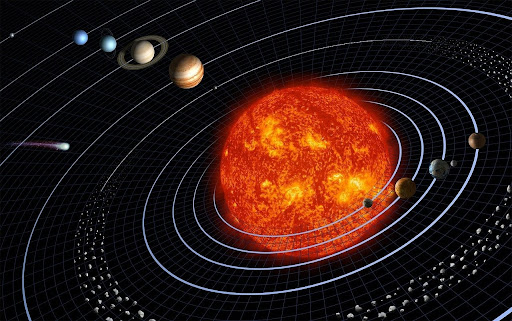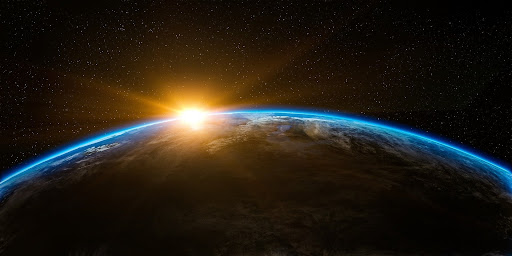
Have you ever wondered what is above our heads, even farther than the blue sky, clouds, and ozone layer? There are so many wonders that hang in the universe light years above our heads. Our solar system is known as the Milky Way. The Milky Way is full of planets, asteroids, and stars. In this series we will look at what things are found in the solar system, as well as what they’re made of and what happens on the planets. For this first installment we will look at the center of the solar system… the sun.
What is the Sun?
According to NASA, the sun is a star… a yellow dwarf star to be exact. Hot glowing gases formed together in a ball and are giving our solar system life. There are billions of stars like our sun scattered across the universe. The Sun is the largest object in our solar system. The sun makes up roughly 99.8% of the system’s mass. One year on the sun is equivalent to 230 million Earth years. The sun is roughly 864,000 miles from Earth, or 26,000 lightyears, and 109 times the size. Think of it this way… if the sun was your bedroom door, then the earth would be a coin.
What is the Sun Made of?
“The sun is terrifying and gorgeous, and it’s also the best physics laboratory in our solar system,” Sabrina Savage, project scientist for NASA’s Hinode at NASA’s Marshall Space Flight Center in Huntsville, Alabama, said in a statement. The sun is made of hydrogen and helium. The surface temperature of the sun is 10,000 degrees fahrenheit. The sun’s core temperature is around 27 million degrees Fahrenheit. The sun constantly turns hydrogen to helium inside it’s core, which creates the light and warmth we receive on Earth. “A star the size of our sun requires about 50 million years to mature from beginning to adulthood,” says NASA. “Our sun will stay in this mature phase for approximately 10 billion years.” Several billion years from now, the hydrogen inside of the sun will run out due to all of it being turned to helium. When that happens, the sun won’t be hot enough to burn, so the sun will go through the end phases stars go through. (which we will cover in the fourth segment of six Minute Planetarium: asteroids, comets, and stars).

What do Solar Storms Affect?
Solar storms are eruptions of mass and energy from the sun’s surface. Flares, prominences, sunspots, and coronal mass ejections are common solar activity. Sometimes these particles make it all the way to the Earth by flowing along the Sun’s magnetic field into space. When the material collides with the Earth’s magnetic field, it can dump particles into our atmosphere to cause the Aurora Borealis. The same ‘charged’ particles can produce magnetic fields, which can modify the Earth’s magnetic field and affect compass readings. The changing magnetic fields can produce electrical surges in our power grids leading to black outs.
The sun gives life to our planet and our solar system. Without the sun, the solar system would be lifeless and humans would not exist. It is important we know about the things that hang above our reach. If you would like to know what else lies to infinity and beyond, see our next installment of Five Minute Planetarium: Mercury.
Written by: Erinn Malloy
